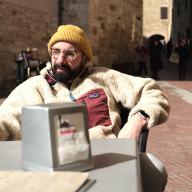
James Herbert
Bio
Participation1
I'm currently a co-director at EA Netherlands (with Marieke de Visscher). We're working to build and strengthen the EA community here.
Before this, I worked as a consultant on urban socioeconomic development projects and programmes funded by the EU. Before that, I studied liberal arts (in the UK) and then philosophy (in the Netherlands).
Hit me up if you wanna find out about the Dutch EA community! :)
Posts 17
Comments246
Ah, I thought you might’ve asked this before! Thanks for the link.
If anyone reading this has a say in future surveys, for what it’s worth, I’d be keen to see this question included.
Why? Because I think there’s a lot of value in aiming to grow community capital - basically, individual career capital times coordination ability. A measure of connectedness could give a useful signal about how well we’re doing on the coordination side.
As ever, really appreciate the work on this survey, thanks for putting it together!
Since 'personal connections' was again the most commonly cited positive influence, I wonder if it’d be valuable to start tracking 'perceived network closeness' (or something similar) over time?
Something like:
“How many people in the EA community would you feel comfortable asking for help or advice about EA-related topics?”
This could give organisers and community builders a simple way to monitor how interconnected the community is - and whether that’s improving year to year. Ideally, this would be broken down region-by-region, so we could see which regions are performing particularly well.
In a perfect world, I'd love a measure of 'impact-mobility', but I'm not sure where the data would come from - maybe swapcard?
Does anyone want to develop a version of Talos/Tarbell/AIM/Horizon but for comms roles?
Last year, we at EA Netherlands spent considerable time developing such a programme idea in collaboration with someone with significant experience in science and technology communications. Our funding application wasn't successful but I think the idea still has legs, especially given the results of the MCF talent needs survey. If you're interested, let me know and perhaps we can hand over what we developed and you can give it another go.
- Should we work with EA-aligned orgs to support them methodologically with their impact management and MEL, or with non-EA orgs to motivate them to shift towards a more EA-aligned approach regarding impact management?
- Not sure, both options have their merits. The Mission Motor is focused on doing the latter for animal welfare organisations, maybe touch base with them to see what their experience has been (if you haven't already).
- Do you know EA-related orgs that could need support with impact planning (e.g. with developing a Theory of Change), tracking, or analysis?
- I know lots of city and national organisations funded by the Centre for Effective Altruism's Community Building Grants programme would like to improve their M&E (including ourselves at EA Netherlands, but we've already got outside support). Perhaps you could contact Naomi, who is responsible for this programme.
- What is your intuition on the level of capacity spent on and knowledge about impact management in EA organizations?
- I'm most familiar with community-building EA organisations like ourselves. My impression is that EA CB orgs tend to do better than the average non-profit, but we're still nowhere near as good as we ought to be.
- Do you work for an organization yourself (or know one well) that might want to build a ToC with us or do a tracking or measurement workshop?
- At EA Netherlands we're already getting outside support with our M&E but I think other national organisations would be interested. Again, I'd consider contacting Naomi from CEA. Right now she's putting together the programme for our next retreat and several requests have been made for M&E training.

Thanks for sharing your analysis! Very interesting to read.
Did you look into whether steward-ownership is a viable strategy for mitigating against this risk?